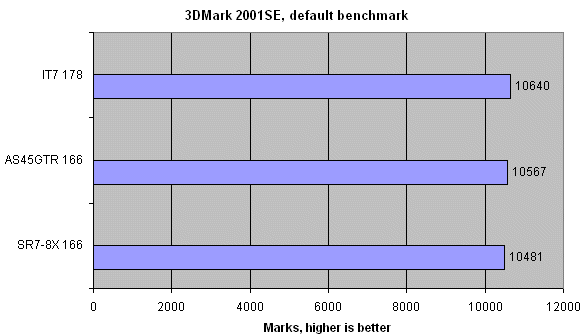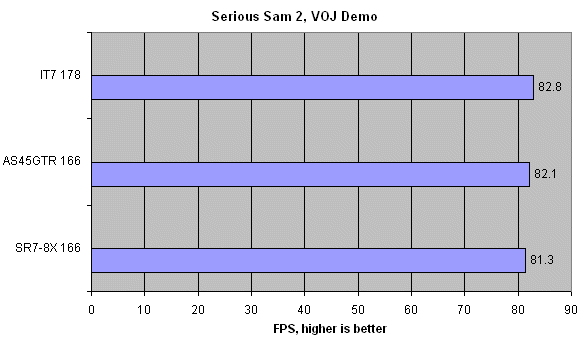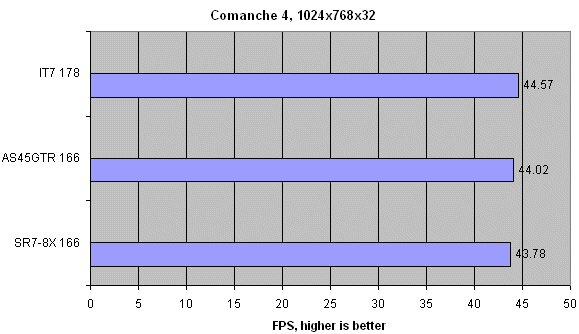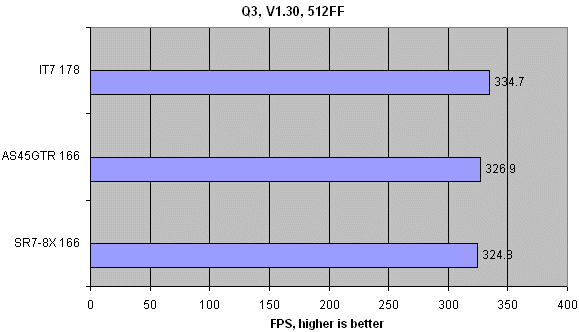Benchmarks II
The Shuttle AS45GTR has put up a decent showing in our first round of benchmarks, now let's see if it can continue to do so as we move on to gaming-related benchmarks.
I'll start off with 3DMark 2001SE. Put simply, it gives you a final score based on the running of 7 individual tests. The greater the performance, the greater the score. Benchmarked at its native resolution of 1024x768x32, a resolution that is still quite heavily relies upon a decent interaction between CPU, memory, and AGP.

Using a stock GeForce4 Ti 4400 (275/550), we see that each of our motherboards, once paired with a 1.6A P4 @ 2.133GHz (133FSB), can comfortably break the 10,000 mark barrier. As the graph indicates, you cannot discern the difference between any of these scores on a purely visual basis, they are only differentiated for review purposes. With that being the general case, I'm far more interested in stability than ultimate peformance.
On to Serious Sam 2 now. Benchmarking the Valley of the Jaguar timedemo, on that is mainly subsystem limited at 1024x768x32 and Normal preferences.

More of the same here.
How about Comanche 4, another benchmark largely limited by the subsystem when using a GeForce Ti video card. Benchmarked at 1024x768x32.

This benchmark is quite reliant on a decent subsystem. Radical changes in memory and / or CPU speed usually present themselves with higher or lower scores. Considering we are running the same speed of CPU (2.133GHz), and very similar speeds of memory, the results are where I expect them to be.
On to Quake 3. I'll only run 512 fastest to show just how well each chipset is able to deliver usable bandwidth from memory to CPU.

Very slight differences in CPU operating speed can make a difference here. Seeing as the Shuttle and ABIT motherboards operate at almost identical speeds, the differences are largely down to either memory speed or more efficient timings









